Ever grabbed a scoop of pre‑workout powder, tossed it straight into your mouth, and wondered if that was a genius hack or a terrible idea? You’re not alone. Dry scooping—chugging that powder without any water—has become a viral challenge on TikTok and in some gym corners. The quick answer? It can be done safely only if you respect the label, the dosage, and the science behind the ingredients. Below, I’m breaking down everything you need to know about dry scooping safety, the real risks, and the smarter ways to boost your workouts.
Stick around, and you’ll walk away with a clear picture of why the “dry scoop” hype is more trouble than it’s worth, plus practical tips you can start using today. Let’s get into it.
What Is Dry Scooping
Definition and the TikTok boom
Dry scooping means eating pre‑workout powder straight from the container, without mixing it with water first. The idea is that you get an instant “kick” because the ingredients hit your system all at once. The trend exploded on TikTok, where short clips of people shoving a scoop into their mouths get millions of views (a phenomenon reported by Greatist).
Why the hype?
People love quick hacks, especially when they promise more energy, better pumps, or just a flash of internet fame. Some claim it “saves 90 seconds” while others say it feels like a turbo‑charged caffeine shot. The reality? The supposed speed boost is mostly a placebo, and the dangers outweigh any fleeting benefit.
Core Risks
Immediate physical dangers
Dry scooping puts the powder directly in your throat, which can cause choking, coughing, or even inhalation of the fine particles. The National Capital Poison Center warns that inhaled powder can irritate the lungs and lead to inflammation or infection.
Cardiovascular concerns
Most pre‑workout formulas contain caffeine—sometimes 200 mg to 500 mg per scoop, equivalent to two to five cups of coffee. Swallowing that dose all at once can spike your heart rate, raise blood pressure, and trigger arrhythmias. A cardiology team at the University of Mississippi Medical Center reported cases of premature ventricular contractions and palpitations after dry scooping (UMC).
Respiratory complications
If powder slips into your airway, you risk aspiration pneumonia—a serious lung infection. Even a brief “cough‑fit” can cause lung irritation that feels like a lingering chest tightness.
Gastrointestinal upset
Undiluted powder sits heavy in your stomach, leading to nausea, vomiting, abdominal cramps, and even acid reflux from the citric acid common in many formulas.
Real‑world stories
One 20‑year‑old TikTok user suffered a heart attack after a dry scoop, according to a report covered by Inside Edition. Another video showed a person gagging and nearly choking before they could chase the powder with water. These anecdotes aren’t rare—they’re warning signs.
Ingredient Insight
What’s inside a typical scoop?
Pre‑workout powders can be a cocktail of:
- Caffeine – the main stimulant
- Beta‑alanine – causes the “tingling” sensation
- Citric acid – gives the sour taste but can erode tooth enamel
- Creatine, BCAAs, L‑citrulline – performance‑enhancing amino acids
- Niacin – can cause flushing
How dosage changes with dry scooping
Manufacturers design each scoop to be diluted in water because the liquid spreads the ingredients across your digestive tract, allowing gradual absorption. When you dry scoop, you deliver the entire dose instantly, which can overwhelm your system.
| Ingredient | Typical Amount per Scoop | Effect When Mixed | Effect When Dry Scooped |
|---|---|---|---|
| Caffeine | 200‑500 mg | Gradual energy boost, 30‑60 min onset | Rapid surge → jitteriness, heart palpitations |
| Beta‑alanine | 1.5‑2 g | Delayed tingling, improved endurance | Immediate intense tingling, possible throat irritation |
| Citric acid | 0.5‑1 g | Flavor, assists mineral absorption | Direct contact → enamel wear, stomach upset |
Dry‑scooping dosage tip
Never exceed the manufacturer’s recommended scoop size. Even “half a scoop” can be too much if you’re not used to the caffeine load. If you’re new to pre‑workouts, start with a quarter scoop mixed with water to gauge tolerance.
Safe Practices
Follow the label—every time
The most trustworthy advice is simple: mix the powder with the amount of water the label specifies. The water isn’t just for taste; it dissolves the ingredients, making them easier on your stomach and lungs.
Start low, go slow
If you’re curious about pre‑workout, begin with a half‑scoop mixed with water, and see how your body reacts. Increase gradually only if you feel comfortable.
Hydrate before and after
Pre‑workout isn’t a substitute for water. Drink a glass of water 30 minutes before you train, and keep sipping during your session. Proper hydration aids digestion and helps your heart stay steady.
Quick‑check safety checklist
- Read the supplement facts label.
- Measure the exact scoop—no “eyeballing.”
- Mix with the recommended water volume.
- Take it 30‑60 minutes before exercise.
- Listen to your body—if you feel shaky or nauseous, stop.
Better Alternatives
Mixed pre‑workout drinks
When you shake a scoop with water, the solution is easier to swallow, less irritating, and the caffeine is released more gradually—exactly what the body expects.
Natural caffeine sources
If you just need a quick energy lift, a cup of coffee or a cup of green tea can give you 80‑200 mg of caffeine without the extra “sprinkles” of beta‑alanine or citric acid.
Food‑based energy boosters
Bananas, oatmeal, or a small handful of dates provide carbs for fuel, while a bit of beet juice can improve blood flow. These foods won’t cause the same heart‑rate spikes as a dry scoop.
Expert Views
Toxicology perspective
Kelly Johnson‑Arbor, MD, a medical toxicologist at the National Capital Poison Center, says: “The rapid delivery of a large caffeine dose can cause severe cardiovascular stress, especially in young, healthy adults who think they’re invincible.”
Sports‑dietitian insight
Sami Kauffman, RD, from Parkview Health, adds: “Pre‑workout powders are formulated to be diluted. Taking them dry bypasses the safety buffer that water provides, leading to mouth and throat irritation, and increases the risk of choking.”
Cardiology commentary
Dr. Michael Hall, cardiology associate professor at UMMC, notes that “while arrhythmias from dry scooping are rare, the surge in blood pressure can trigger a heart attack in susceptible individuals, especially when combined with intense exercise.”
When to Seek Help
Red‑flag symptoms
If you notice any of the following after a dry scoop, call emergency services or the Poison Control hotline (1‑800‑222‑1222):
- Severe chest pain or pressure
- Rapid, irregular heartbeat
- Difficulty breathing or choking that won’t resolve
- Dizziness, fainting, or extreme shakiness
- Persistent nausea or vomiting
What to tell the medical team
Provide the exact brand, the amount you took, and the time of ingestion. This information helps toxicologists calculate the caffeine load and decide on treatment.
Bottom Line
Dry scooping may look flashy, but the reality is that it swaps a few seconds of convenience for a host of serious health risks. The safest route is to honor the manufacturer’s mixing instructions, respect the dosage, and stay hydrated. If you’re after a boost, a properly mixed pre‑workout or a natural source of caffeine will give you the energy you need without jeopardizing your heart, lungs, or teeth.
Have you ever tried dry scooping? How did it feel, and did you notice any side effects? Share your experience in the comments below or tag us on social media with #DryScoopSafety. And if you’re ready to pick a pre‑workout that’s both effective and safe, check out our guide on choosing the right supplement for your goals.




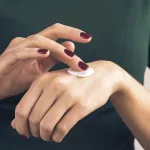

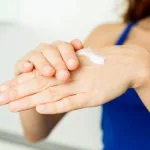

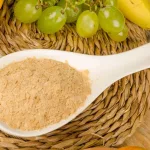


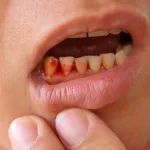



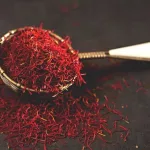


Leave a Reply
You must be logged in to post a comment.